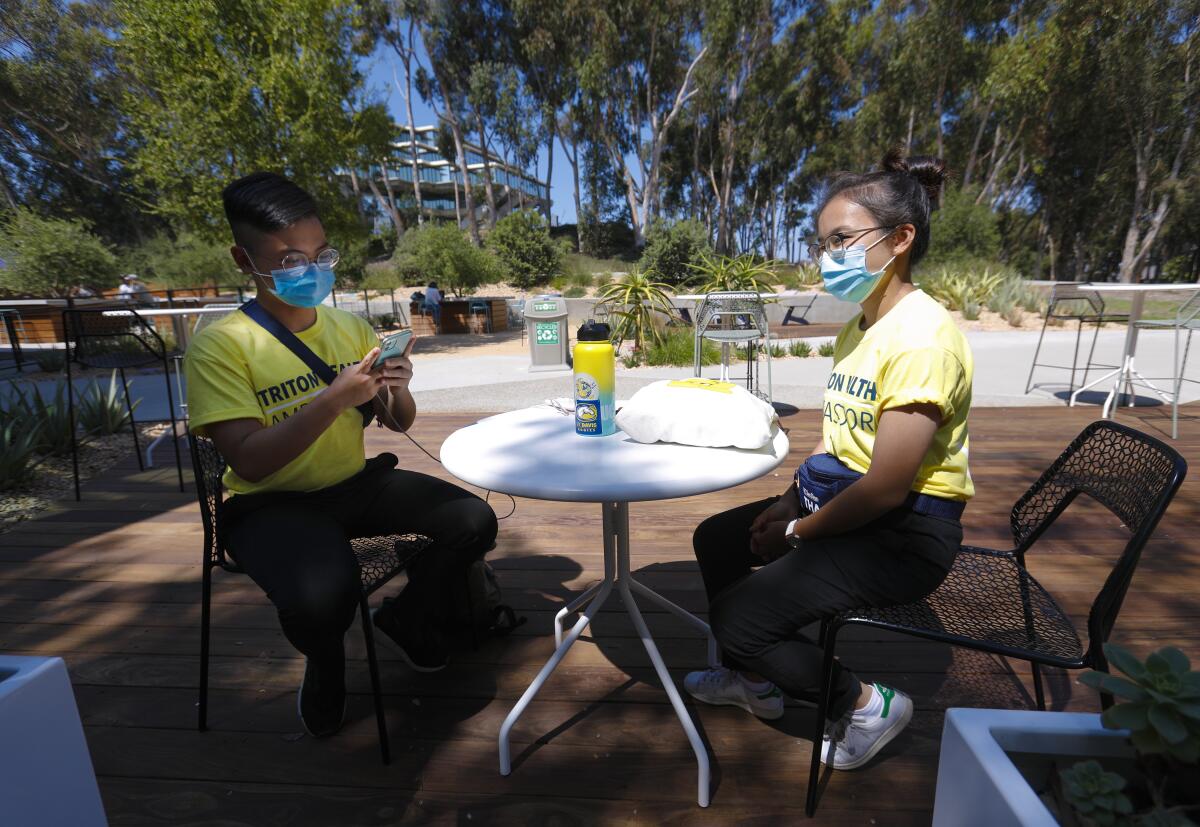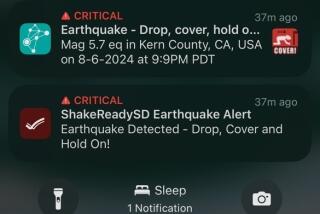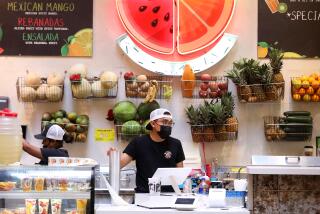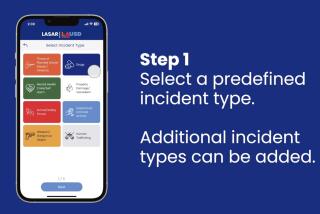UC San Diego launches smartphone-based COVID-19 exposure notification system

SAN DIEGO — Elizabeth Meckert breathed a small sigh of relief when her son, Andrew, a freshman at UC San Diego, set up his iPhone to let him know if he comes in contact with someone who later tests positive for COVID-19.
This digital heads-up is made possible with smartphone-based exposure notifications. California recently gave UC San Diego the go-ahead to test the technology, and the La Jolla university launched its pilot program on Thursday. Students like Andrew were quick to try it.
“It makes me feel better to know that he’ll know right away if someone he’s come in contact with tests positive. It’s a little insurance policy,” said Elizabeth Meckert. She traveled to the campus from Lake Oswego, Ore., to help her son move into his dorm. “It’s scary enough sending your freshman away to college this far away, but with COVID, it makes it even scarier.”
University officials hope the cellphone technology will help them avoid the type of coronavirus chaos that has left more than 933 infected at San Diego State University.
It’s a scene that has played out at colleges across the nation, where tens of thousands of cases have occurred. This week, the federal Centers for Disease Control and Prevention said that Americans in their 20s now account for more COVID-19 cases than any other age group. The same is true in San Diego County, where the 20-29 age group accounts for 25% of cases.
The UC San Diego program will be built upon Apple and Google’s exposure notification system, which uses Bluetooth technology to warn an individual when they’ve come in close contact with someone who later tested positive for the novel coronavirus. The latest expansion of this system, called “exposure notifications express,” allows health agencies to put the technology to use without developing their own cellphone application.
Apple smartphone users who decide to participate can do so by enabling the exposure notifications system that was recently added to iPhone operating systems, while Android users will get a link to download the CA COVID Notify app from Google Play.
If UC San Diego’s program is successful, the state may decide to offer similar notifications to residents across the state.
“I would like to urge all UC San Diego students, faculty and staff to consider adding CA COVID Notify to your smartphone today to increase the possibility of quick detection and help keep our community safe,” UC San Diego Chancellor Pradeep Khosla said in an email announcing the program’s launch.
University officials estimate about 3,500 users had enrolled in the program by Thursday.
Luan Nguyen was one of those users. The public health major spotted the email Thursday morning. He said the installation took no time at all.
“Honestly, I think it’s really important to be aware of what’s going on around you,” the freshman said. “We’re relying more on technology so it’s advancing more ... and in this case it’s a good way to keep down COVID cases.”
Taylor Smith, another freshman, plans to enable the notifications, as well.
“Why not? Why not be more safe, feel more safe?” she said.
But some members of the UC San Diego community are undecided.
“I don’t know,” said 31-year-old Andrew Christensen, who works in the university’s recreation department. “They’ve sent out some emails about it and I’ve kind of gone back and forth.”
Christensen, who works closely with student athletes, acknowledged that app-based technology could be very helpful in the college’s efforts to control the spread of COVID-19, and he liked that it was specific to the campus community.
But privacy was still a concern. “When does that sort of tracking stop?”
Google, Apple and university officials have said often that exposure notification technology uses anonymous keys to track users without identifying individuals.
Students, faculty members and staff can read more about the program on the college’s California COVID Notify web page, which explains how the technology works and how to set it up on a smartphone.
Exposure notifications are part of the university’s Return to Learn program, which relies in part on the regular testing of the UC San Diego community. The plan also includes face covering requirements, increased sanitation, wastewater testing and public health interventions like case isolation and contact tracing.
Across the county, COVID-19 continues to spread. On Thursday, county officials reported 171 new cases, and six more deaths. The three men and three women were in their mid-50s to their early 90s. All but one had underlying medical conditions.
Officials are also investigating seven new community outbreaks: four in restaurants or bars, two in other businesses and one at a religious-affiiiated location. In the last week, the county has investigated 15 such outbreaks.
So far, no outbreaks have occurred at UC San Diego.
Winkley writes for the San Diego Union-Tribune
More to Read
Sign up for Essential California
The most important California stories and recommendations in your inbox every morning.
You may occasionally receive promotional content from the Los Angeles Times.










